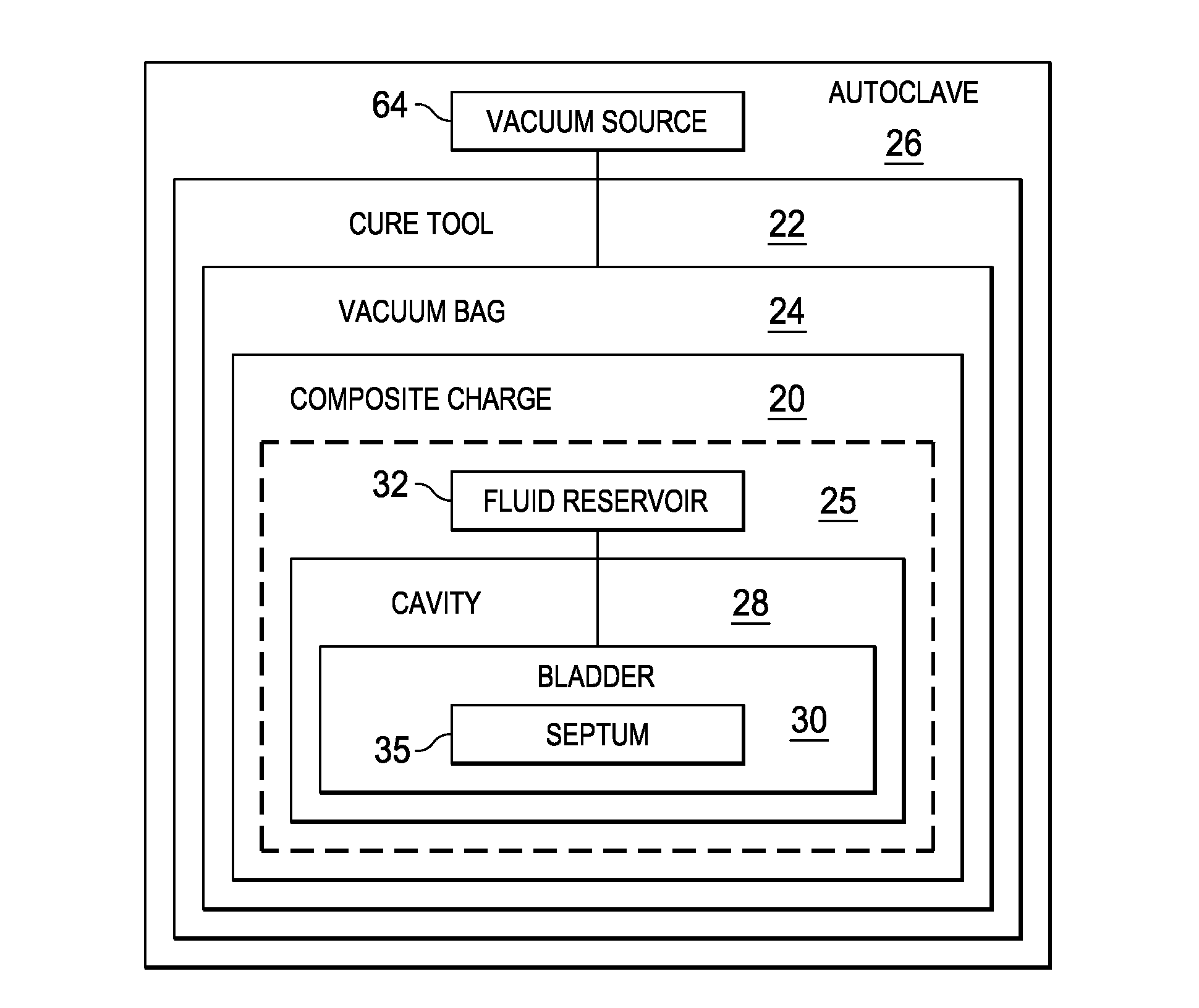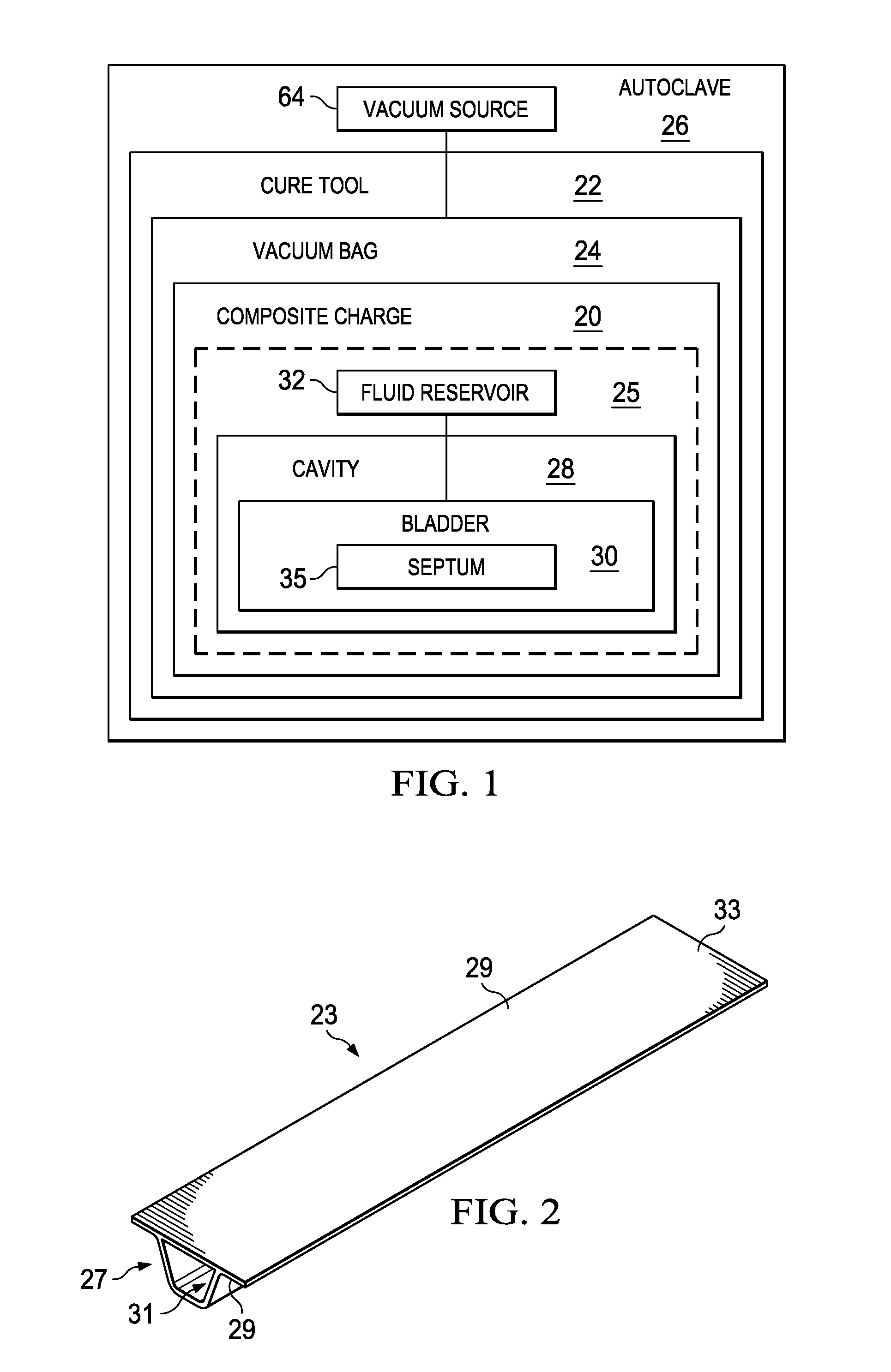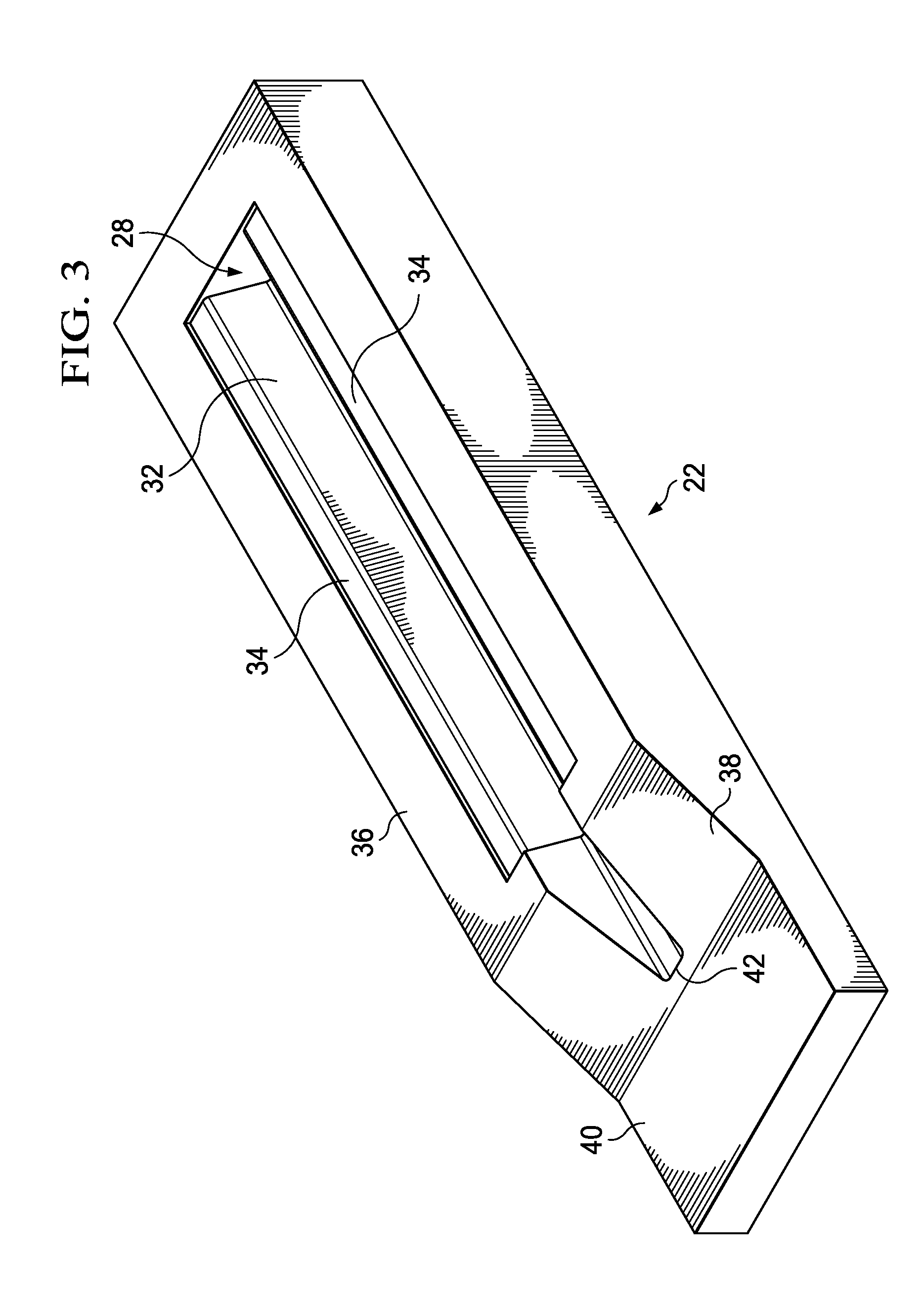Non-Vented Bladder System for Curing Composite Parts
- Summary
- Abstract
- Description
- Claims
- Application Information
AI Technical Summary
Benefits of technology
Problems solved by technology
Method used
Image
Examples
Embodiment Construction
[0032]Referring first to FIG. 1, an uncured composite resin part 20, hereafter referred to as a “charge”, a “composite charge”, a “composite part charge” or a “stringer charge”, is cured on a cure tool 22 placed in an autoclave 26 in which autoclave heat and pressure are applied to the composite charge 20. The composite charge 20 includes one or more internal voids, trapped or enclosed areas, or cavities, which for ease of description, will collectively be referred hereinafter as a cavity 28. A flexible, inflatable bladder 30 is placed within the cavity 28 prior to a cure cycle in order to react autoclave pressures applied to the charge 20 during curing. A flexible fluid reservoir 32 is mounted on the cure tool 22 and is coupled with the bladder 30 in an manner that forms a closed bladder system 25 which is not vented to the atmosphere within the autoclave 26. In other words, the bladder 30 and the fluid reservoir 32 form a closed fluid system that is not directly exposed to the int...
PUM
| Property | Measurement | Unit |
|---|---|---|
| Pressure | aaaaa | aaaaa |
| Density | aaaaa | aaaaa |
| Flexibility | aaaaa | aaaaa |
Abstract
Description
Claims
Application Information
 Login to View More
Login to View More - R&D
- Intellectual Property
- Life Sciences
- Materials
- Tech Scout
- Unparalleled Data Quality
- Higher Quality Content
- 60% Fewer Hallucinations
Browse by: Latest US Patents, China's latest patents, Technical Efficacy Thesaurus, Application Domain, Technology Topic, Popular Technical Reports.
© 2025 PatSnap. All rights reserved.Legal|Privacy policy|Modern Slavery Act Transparency Statement|Sitemap|About US| Contact US: help@patsnap.com



